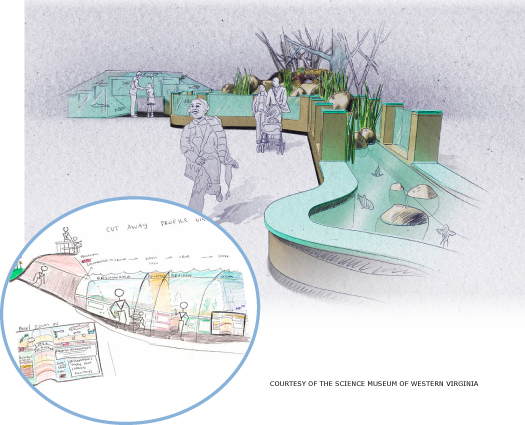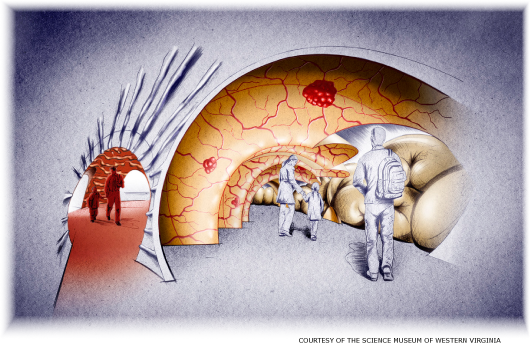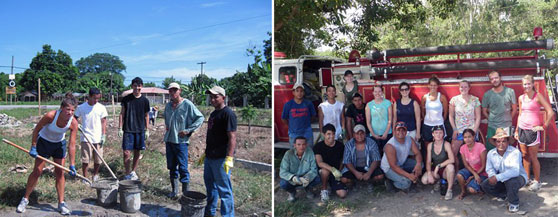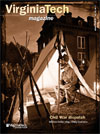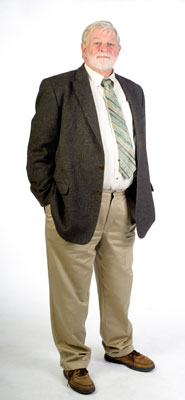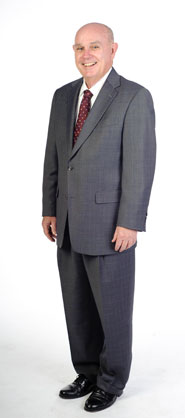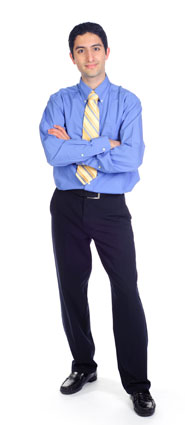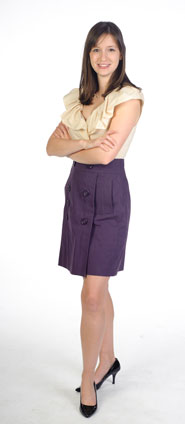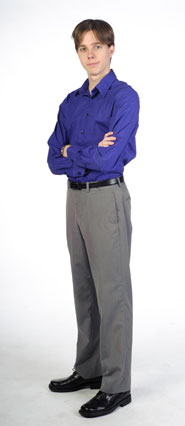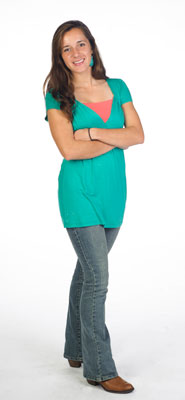 |
|
||||||
|
|
||||||||||||||||||||||||||||||||||||||||||||||||||||||||||||||||||||||||||||||||||||||||||||||||||||||||||||||||||||||||||||||||||||||||||||||||||||||||||||||||||||||||||||||||||||||||||||||||||||
|
Talent shows
The series is taught by distinguished faculty and brings together a diverse group of students to study topics from Chinese medicine to the philosophy of food. These courses often become a hallmark of Honors students' undergraduate studies. Further development of the colloquia has prompted university administrators to return to the classroom to teach, while some students have also decided to instruct their own courses. From designing innovative science museum exhibits to leading service-learning expeditions to Honduras, students exemplify the program's role as a creative hub that enriches the academic experience at Virginia Tech.
Bringing Science to Life
For the Bringing Science to Life colloquium, Virginia Tech harnessed the energy of its Honors students as the architects of new, revolutionary exhibit designs for the Science Museum of Western Virginia in Roanoke, Va. Originally taught in spring 2009 by Alumni Distinguished Professor Arthur L. Buikema Jr. and Virginia Tech Provost Mark McNamee, the colloquium offers insights for museums struggling to move forward in the era of Google and Twitter. It's also a testament to the synergy created by pairing top administrators and faculty with high-performing students.
"Let's let them design an exhibit," Buikema recalled thinking, "and now they've got to think about age, ethnicity, educational background—all the things that are real [considerations] for scientists in communicating what they do." During its first semester, the colloquium pulled in about a dozen first-year students to invigorate the image of the Roanoke museum. The museum is now in the final planning stages of a comprehensive $27 million renovation that will start in summer 2011, with a projected re-opening in spring 2013. The plans incorporate many of the students' concepts. The students started by visiting the science museum to survey visitors. Some exhibits involved parents but alienated the kids, or vice versa. Children were especially attracted to hands-on pieces, such as a tornado funnel or a river exhibit with horseshoe crabs, which included an employee on hand to answer questions. By the time visitors arrived at the crystal or fossil room, though, nobody seemed too excited. During their investigation, students discovered that museum visitors want clear, visual answers, not rows of text-filled plaques. Scientists, however, are loath to oversimplify their work, according to McNamee, a trained biochemist. "I had the same problem," he admitted. "I thought there were too many words, and when the students mentioned it, I even noticed it more. I realized that I wasn't reading [plaques]; I just started [interacting with the exhibits]." Larry Bell, senior vice president for strategic initiatives at the Boston Museum of Science, said that the role of the science museum half a century ago was far different from today. "It was basically a place where you could go and see something you'd maybe heard about, but you'd never seen," he said, noting that museums' goals have since "shifted from knowledge to stimulating your curiosity, and maybe motivating you to want to learn more. ... Those learning opportunities work for people of all ages." With that perspective in mind, the students worked in teams to create design presentations that were delivered to classmates and then to museum staff and exhibit consultants. Ideas that originated from that first semester included a walk-through gastrointestinal tract, a sustainability simulator, and a Ripley's-style aquarium to showcase local riverbed ecosystems—ideas that have evolved and now appear in the museum's renovation plans.
John Good, an exhibit producer who, as president of Exhibit IQ, is working with the museum on the renovation, said he was delighted with the students' ideas. Often, museum designers are reluctant to include others in the creative process. To his knowledge, partnering with students in this way hasn't been done before in the industry. "The fact that we stepped out of that prism ... the product of [their] creativity definitely shows," Good said. "A lot goes into this. It's more complicated than it looks on the surface. From my point of view, I clearly saw that [the students took] all of the [appropriate] parameters into considerations and came up with some very reliable concepts." The colloquium was repeated in the fall 2009 semester, with some of the original students returning as tutors. The class will enter its third iteration in spring 2011, and the partnership has been a catalyst for discussions between the university and the museum about future collaboration. "The progress that was made just totally blows my mind," said Buikema, who teaches ecology, environmental science, evolution, and systematics. "One of the mistakes we make as instructors is we think we know it all and students really don't know much. In reality, students know a lot, and they are very capable individuals; we just haven't given them the freedom to contribute." Arielle Kohr, a human development major who participated in the colloquium as a freshman in fall 2009, worked on a team to produce an exhibit idea based on the human reproductive system. She entered the class hoping to gain a new perspective on science and teaching, and she emerged with the thought of interning at the Smithsonian museums. "The thing that I like the best is that [the subject] was a complete field of work that I had never even considered before, but found that I think I was relatively good at it and would want to pursue that in life, depending on where my work takes me," Kohr said. "[The class] allowed me to use my creativity to its fullest potential, and to get out of the test-taking mode and [apply] practical skills in order to create something that could be put to use." Colloquium Americanum According to Terry Papillon, Honors director and professor of classics, much of the vitality behind the colloquium series is due not only to exemplary faculty, but also to the competitive mindset inherent in such a diverse group of students. "One might be an engineer, one an architect, one a historian, one a French major, one a dairy science major," Papillon said. "You are faced really vividly with the idea that people think about things differently." The science colloquium is just one example. In other instances, students have taken the initiative to establish their own course, whether it be rallying their peers to explore a common interest or fulfilling the spirit of the university motto Ut Prosim (That I May Serve). Ross McFarland, now a junior architecture major, was a freshman when he enrolled in a colloquium examining the history of the city, taught by President Charles W. Steger and Paul Knox, senior fellow for international advancement. The next year, McFarland attended a colloquium on suburbia taught by a fellow architecture major, then decided to lead his own course on American transportation. His spring 2010 Colloquium Americanum helped engineering and philosophy majors alike examine how transportation has influenced American communities. "Honors trusts the students to really pursue academic goals or interest areas with vigor," McFarland said. "This [freedom] gives you the opportunity to pursue what you're interested in, with other people, gaining other viewpoints and other perspectives." McFarland's work has been influenced by that first city colloquium, and he hopes to expand the course in future years to such themes as education and national security. Commonly in the Honors Program, a singular experience will propel a student toward a career, Papillon noted. Colloquia—and awards such as the sophomore scholarships, which provide $10,000 for a study-abroad trip—strive for that very goal. Ut Prosim El Porvenir It was the water in El Porvenir, Honduras, that caught the attention of Emily Barry. After participating in a spring 2008 colloquium, taught by accounting professor Brian Cloyd, that involved creating a service-learning project, Barry, now a graduate student in international affairs and graduate assistant with the Center for Student Engagement & Community Partnerships, traveled to the rural Honduras town. Noticing that the citizens had come together around certain issues such as water sanitation, Barry got the idea to enlist others to establish a partnership between the village and Virginia Tech. Colloquium students wrote grant proposals, held fundraisers, and secured an $11,000 grant from a donor to make their ideas a reality.
Members of the group also found time to immerse themselves in the community of El Porvenir. A couple of student joggers inspired a village exercise class that included nutrition lessons taught by a nutrition major. A Honduras vs. United States soccer match turned into a community event that attracted more than 200 villagers, complete with vendors. (Honduras won.) Participants in the colloquium also had to confront more difficult themes, such as examining the effects of neoliberalism in Honduras. Dole Pineapple Company employs 70 percent of El Porvenir workers, presenting an interesting case study of how globalization affects the local economy. "I just ate a pineapple—I had a little fruit cup for lunch. What does that mean? How is that affecting the poverty of these people? What are the politics behind that?" Barry asked. "Having discussions like that and then being able to go down there and see Dole and see how [the company] pollutes the rivers, but also gives people sustenance—it's difficult; it's hard to find concrete answers." The Honors Program's official motto, "Excellence is in the journey," suggests that asking the right questions is what really matters. As laboratories for new ideas, these colloquia and many others are empowering students to meet the challenge posed by the program's unofficial motto: "Make yourself interesting."
|
|
|||||||||||||||||||||||||||||||||||||||||||||||||||||||||||||||||||||||||||||||||||||||||||||||||||||||||||||||||||||||||||||||||||||||||||||||||||||||||||||||||||||||||||||||||||||||||||||||||||
|
|

